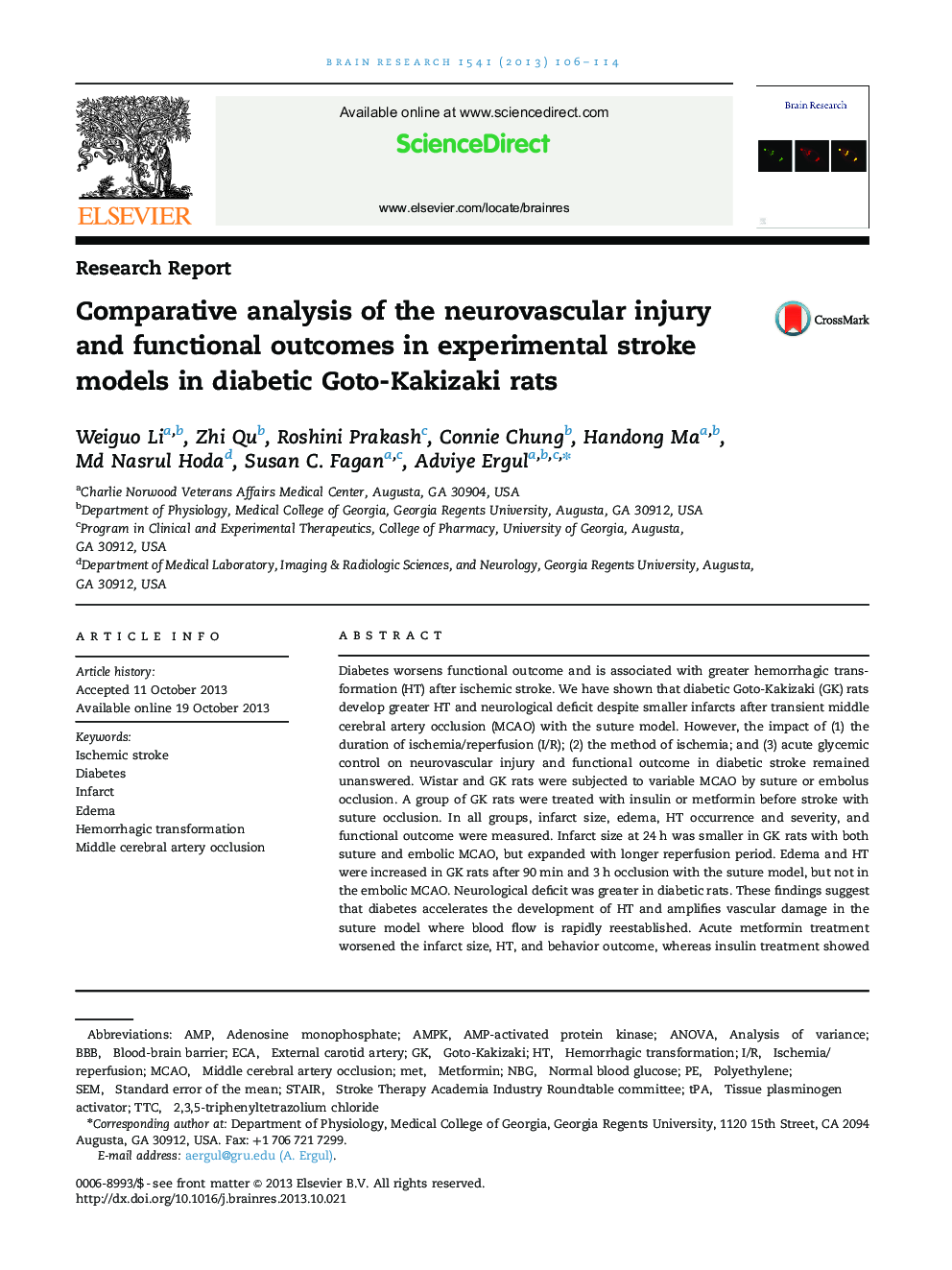| Article ID | Journal | Published Year | Pages | File Type |
|---|---|---|---|---|
| 4324460 | Brain Research | 2013 | 9 Pages |
Abstract
Diabetes worsens functional outcome and is associated with greater hemorrhagic transformation (HT) after ischemic stroke. We have shown that diabetic Goto-Kakizaki (GK) rats develop greater HT and neurological deficit despite smaller infarcts after transient middle cerebral artery occlusion (MCAO) with the suture model. However, the impact of (1) the duration of ischemia/reperfusion (I/R); (2) the method of ischemia; and (3) acute glycemic control on neurovascular injury and functional outcome in diabetic stroke remained unanswered. Wistar and GK rats were subjected to variable MCAO by suture or embolus occlusion. A group of GK rats were treated with insulin or metformin before stroke with suture occlusion. In all groups, infarct size, edema, HT occurrence and severity, and functional outcome were measured. Infarct size at 24Â h was smaller in GK rats with both suture and embolic MCAO, but expanded with longer reperfusion period. Edema and HT were increased in GK rats after 90Â min and 3Â h occlusion with the suture model, but not in the embolic MCAO. Neurological deficit was greater in diabetic rats. These findings suggest that diabetes accelerates the development of HT and amplifies vascular damage in the suture model where blood flow is rapidly reestablished. Acute metformin treatment worsened the infarct size, HT, and behavior outcome, whereas insulin treatment showed a protective effect. These results suggest that the impact of ischemia/reperfusion on neurovascular injury and functional outcome especially in disease models needs to be fully characterized using different models of stroke to model the human condition.
Keywords
NBGAMPKGoto-KakizakiMCAOECAAMPtPATTC2,3,5-triphenyltetrazolium chlorideAMP-activated protein kinaseI/Radenosine monophosphatemiddle cerebral artery occlusionInfarctischemia/reperfusionDiabetesanalysis of varianceANOVAhemorrhagic transformationstandard error of the meanBBBIschemic strokeexternal carotid arterytissue plasminogen activatorBlood-brain barrierMetforminSEMMETEdemaStairPolyethylene
Related Topics
Life Sciences
Neuroscience
Neuroscience (General)
Authors
Weiguo Li, Zhi Qu, Roshini Prakash, Connie Chung, Handong Ma, Md Nasrul Hoda, Susan C. Fagan, Adviye Ergul,
